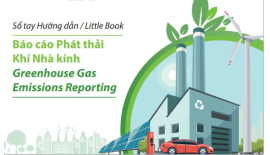
Công ty cổ phần công nghệ và tư vấn CIC
News of Company
Home > News > News of Company > Green transformation of industry – The foundation for a roadmap to reduce greenhouse gas emissions
Successfully Organize a Conference on the Application of Bentley's BIM/Digital Twin Solutions...

Net Zero: CIC Launches Greenhouse Gas Inventory Website

Bentley Energy Solution - A Comprehensive Solution for the Energy Sector

Release of enjiCAD 2025 SP2: Elevating Design Performance

5 Technology Trends Shaping 2025
Green transformation of industry – The foundation for a roadmap to reduce greenhouse gas emissions
28/12/2023
Lượt xem 9
This is the event with the participation of Representatives of the Ministry of Construction; Representatives of relevant ministries and branches along with representatives of international research organizations on climate change, circular economy, associations, corporations, construction corporations, real estate investors, Management Board of Industrial Parks, Industrial Manufacturing Enterprises, FDI Industrial Enterprises, Energy Companies, etc.

Overview of the Industrial Green Transformation Workshop in Hanoi
In the face of climate change, which has become an irreversible trend, the biggest challenge facing humanity, it has been affecting all aspects. Achieving net zero emissions by 2050 (net zero) is an inevitable development goal, achieved mainly through strong energy transition and low-emission development. The new change has had a major impact on global trade and investment since the 26th Conference of the Parties to the United Nations Framework Convention on Climate Change (COP26 Conference).
At the conference, delegates proposed many green solutions, building an impact ecosystem to building a green transformation roadmap for businesses, applying clean fuel LNG in industrial production; Practical experience units that have taken action towards carbon neutrality and implemented environmental and social responsibility.
Delegates highly agreed that achieving the net zero emissions target is the net zero race by 2050. In addition to the specific groups of technical solutions proposed, the 2020 Environmental Protection Law also stipulates clearly understand the role and responsibility of the business community to participate in reducing greenhouse gas emissions according to the roadmap. Accordingly, regulations on greenhouse gas emissions inventory must be implemented 2023. In addition, mechanisms to support the implementation of emission reduction obligations through the carbon credit exchange and offset mechanism Carbon credits... will be applied on a trial basis 2025, to support businesses in achieving their goals of deflation, green transformation, and towards sustainable production.
Representatives of state management agencies along with experts and businesses shared multi-dimensional analysis, comments, and objective assessments on the importance and significance of greenhouse gas inventory in industrial production.
It is known that the Construction industry (or construction industry) contributes to national greenhouse gas emissions two main sources. The first source is emissions industrial processes referred to as IP (greenhouse gas emissions through chemical reactions) in the production of construction materials, mostly cement production, greenhouse gas emissions. during the clinker firing process.
The second source of emissions the process of using energy is fossil fuels for production and commercial activities and operations called direct emissions, belonging to the group of energy emissions. Producing construction materials and cement uses energy and large amounts of fossil fuels and clay.
In addition, emissions using grid electricity for production and commercial activities have been included in the national inventory system under the energy production group and are considered indirect emissions. Reducing the demand for electricity in production activities will contribute to reducing the need for energy production and reducing greenhouse gas emissions.
In addition, the Construction industry also has emission sources when considering the value chain or carbon such as using construction materials in buildings and structures, leakage emissions when using air conditioners, emissions when Use transportation service…
Economic experts also recommend that businesses use inventory data to plan emissions reduction strategies; Using green solutions the ecosystem affects the construction of a green transformation roadmap for businesses, applying clean fuel LNG in industrial production.
It can be said that green transformation is an inevitable trend, meeting the requirements of sustainable development in the current context and future trends.


